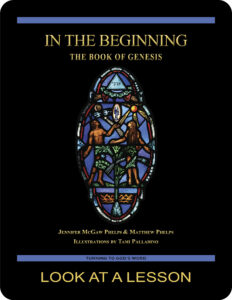protoevangelium
I n the book of Genesis 3:15 (NABRE) we encounter: “I will put enmity between you and the woman, and between your offspring and hers; he will strike at your head, while you strike at his heel.” This passage contains God’s first statement to the serpent after the fall of humanity and is referred to as the protoevangelium or first gospel because it foreshadows at the time of the fall that God and humanity will ultimately win.
n the book of Genesis 3:15 (NABRE) we encounter: “I will put enmity between you and the woman, and between your offspring and hers; he will strike at your head, while you strike at his heel.” This passage contains God’s first statement to the serpent after the fall of humanity and is referred to as the protoevangelium or first gospel because it foreshadows at the time of the fall that God and humanity will ultimately win.
This passage traditionally has had ambiguous meaning with regard to who exactly is striking the serpent’s head. In the Douay-Rheims Bible, we find: “”I will put enmities between thee and the woman, and thy seed and her seed: she shall crush thy head, and thou shalt lie in wait for her heel.” In this translation, the woman rather than her offspring is striking the serpent, and a significant amount of religious art depicts likewise.
This confusion comes about due to a translation or transcription error in the Latin Vulgate, the translation of the Bible used by the Church for more than a millennium. The Latin ipsa conteret caput tuum is the relevant section with the pronoun ipsa being the word at issue. As a feminine pronoun, it must have a feminine antecedent, and as such refers to the woman. We would expect to see the pronoun ispe if it referred to the woman’s offspring. The Hebrew Bible and the Septuagint, by contrast, both unambiguously have the offspring striking at the serpent, and modern Biblical scholarship agrees that that is the correct rendering of the passage.
What event do you think this passage refers to? What does it suggest about the fall of humanity that God had an immediate plan in place for the next steps? Do you think the fall was inevitable? What does this passage suggest about how God views the falls in our own lives?
related topic: gospel
you also may like our study of the book of Genesis
 The first seven lessons of In the Beginning: The Book of Genesis, a 28-lesson Catholic Bible study with an imprimatur, provide an in-depth look at the very earliest biblical history—including the two accounts of Creation, events surrounding the Fall of Adam and Eve, the relationship between Cain and Abel, and the baptismal foreshadowing present in the account of Noah and the Flood. Remaining lessons look at lives of the patriarchs Abraham, Isaac, Jacob, and Joseph. Click on the book’s cover to view a sample lesson.
The first seven lessons of In the Beginning: The Book of Genesis, a 28-lesson Catholic Bible study with an imprimatur, provide an in-depth look at the very earliest biblical history—including the two accounts of Creation, events surrounding the Fall of Adam and Eve, the relationship between Cain and Abel, and the baptismal foreshadowing present in the account of Noah and the Flood. Remaining lessons look at lives of the patriarchs Abraham, Isaac, Jacob, and Joseph. Click on the book’s cover to view a sample lesson.
 Click on the picture of the statue of Moses with horns (above) to learn more about Lost in Translation. A new entry is archived each Monday. Contact us to receive Lost in Translation by email every week. You may use any of the contact links on our website to ask Matthew a question.
Click on the picture of the statue of Moses with horns (above) to learn more about Lost in Translation. A new entry is archived each Monday. Contact us to receive Lost in Translation by email every week. You may use any of the contact links on our website to ask Matthew a question.
